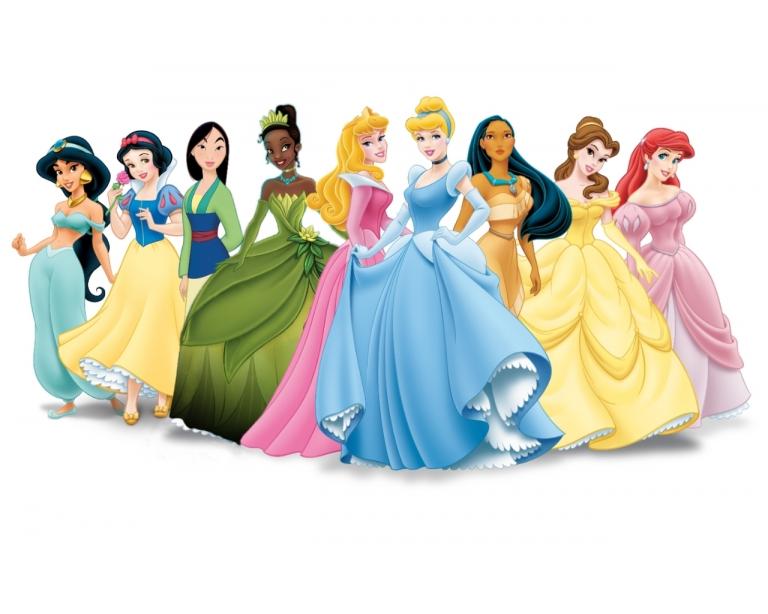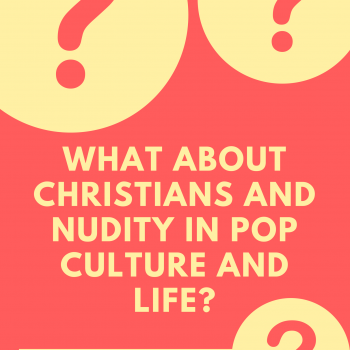
Planned Parenthood on Your Child’s Moral Imagination
I’m sure you’ve seen the tweet from a Planned Parenthood account calling for a grand new kind of Disney Princess. The tweet illustrates a number of obvious realities, not the least that Planned Parenthood may be our greatest cultural example of the Sin Makes You Stupid principle.[1] What is much more important here is that Planned Parenthood clearly recognizes something that I often wonder if the Christian community sees as clearly: stories disciple our children. As Christians we go understand further – stories disciple by God’s design.
You, I, our loved ones, and neighbors live and move and have our being within a story and that is because we live and move and have our being within the God who is a storyteller.[2] History is His story of His Son, a story told in four acts – Creation, Fall, Redemption, and Glorification. Small wonder then that story has such a powerful pull on the very being of creatures like us.
Of course, the brightest among the Christian community have recognized the power of story and harnessed it explicitly for God’s glory. Madeline L’Engle has been in the news lately but before her there was J.R.R. Tolkien and George MacDonald. And before them were John Milton and Bunyan. And before those men was Dante Aligheri. Behind and above all those are the parables told by a carpenter from Nazareth of some repute.
Stories Disciple, Every Time
I think the most useful illustration of this principle – using narrative as a mechanism of discipleship – is the story of C.S. Lewis’ switch from propositional apologetics to a narrative approach:
“I wish your project heartily well,” wrote C. S. Lewis to Christianity Today, “but can’t write you articles.” Carl F. H. Henry, founding editor of the magazine, had in 1955 invited Lewis to contribute to the magazine’s first issue. Lewis declined. Henry was not, as the saying goes, “a day late and a dollar short.” He was over a decade late, and no dollar amount would have mattered, as Lewis gave the lion’s share of his royalties to charity.
There was a time when Lewis would have said yes: namely, when Nazi soldiers marched into Poland and threatened the stability of the world. Adolf Hitler’s influence on Lewis’s apologetics is an irrefutable fact. The Führer’s evil campaign paved the way for the clear-speaking Lewis to engage listeners of the British Broadcast Service. Even as bombs fell over London, Lewis’s baritone voice boomed on radios across Europe. His evangelistic approach was tailormade for men at war.
Thus, Mere Christianity was born in the fullness of time. Published in 1952, the classic was taken from transcripts of his broadcasts from the early 1940s. By the time the book was available in print, Lewis was already changing his approach.
In his 1956 article for The New York Times titled “Sometimes Fairy Stories May Say Best What’s to be Said[3]” Lewis explains the shift in his methodology:
Then of course the Man in me began to have his turn. I thought I saw how stories of this kind could steal past a certain inhibition which had paralysed much of my own religion in childhood. Why did one find it so hard to feel as one was told one ought to feel about God or about the sufferings of Christ? I thought the chief reason was that one was told one ought to. An obligation to feel can freeze feelings. And reverence itself did harm. The whole subject was associated with lowered voices; almost as if it were something medical. But supposing that by casting all these things into an imaginary world, stripping them of their stained-glass and Sunday school associations, one could make them for the first time appear in their real potency? Could one not thus steal past those watchful dragons? I thought one could.[4]
To Lewis’ questions we would offer their assumed answer – yes, there is something about a beautiful story well told that grips us and insists on allegiance to its meaning that is powerful in a way a naked assertion of that same meaning wouldn’t. This doesn’t mean that assertion of truth has no use; as mental tools assertion, argumentation, and defense do great and necessary work. The point here is that narrative, by design, is able to slip past our ability to suppress the truth in unrighteousness in a way that causes us to feel the goodness and beauty of truth even when we reject that truth as a proposition. The feeling of the goodness and beauty of truth doesn’t necessarily win our allegiance to that truth but, in God’s providence, that feeling often serves to plow up the hard ground of our heart so that we are left receptive to truth in a way we wouldn’t have otherwise been.
Think how regularly God emphasized that His people were to tell their children the stories of His work among their nation (both for relief – Psalm 78 – and for judgment – Joel 1). Particularly demonstrative is Joshua’s instruction to the nation at the time of their crossing the Jordan River (Joshua 4):
Then Joshua called the twelve men from the people of Israel, whom he had appointed, a man from each tribe. And Joshua said to them, “Pass on before the ark of the Lord your God into the midst of the Jordan, and take up each of you a stone upon his shoulder, according to the number of the tribes of the people of Israel, that this may be a sign among you. When your children ask in time to come, ‘What do those stones mean to you?’ then you shall tell them that the waters of the Jordan were cut off before the ark of the covenant of the Lord. When it passed over the Jordan, the waters of the Jordan were cut off. So these stones shall be to the people of Israel a memorial forever.”
And the people of Israel did just as Joshua commanded and took up twelve stones out of the midst of the Jordan, according to the number of the tribes of the people of Israel, just as the Lord told Joshua. And they carried them over with them to the place where they lodged and laid them down there. And Joshua set up twelve stones in the midst of the Jordan, in the place where the feet of the priests bearing the ark of the covenant had stood; and they are there to this day.
Think of all this one story of the stones in the river told the children who heard it: “This mighty river is subject to One who is even mightier, One who intervened on behalf of our people because our God is a promise keeper and a Father who knows how to take care of his children. The natural world of our senses is impressive to behold but there is more to existence than we can see with our eyes and, it turns out, what we can’t see is actually in charge of what we can.” As my friend Haven Koehler has written,
Imagination is the first step to learning how to believe in something you cannot see. A child who can imagine something is there is more prone to actually believing something is there. Isn’t this the most important thing a Christian parent would want for a child? …A child who is taught to believe in the impossible things that are invisible are so much better off than a child who is only taught [to believe] in what they can see. This belief in something you cannot see is not to trick your children, but instead start to teach them and prepare them for the one thing that cannot be one hundred percent proven [by sight]: their faith.[5]
God is telling the world a story. It begins in eternity past and stretches into eternity future. It climaxed two thousand years ago when God entered into his creation in a new way. It could reach its temporal conclusion today — or in five thousand years. The theme of the story is shalom: all things in their created place doing what they were created to do in loving relationship with their creator. And, amazing grace, it is a story into which God invites you and me as characters.
Human beings are story-shaped creatures. We are born into stories, raised in stories, and live and die in stories. Whenever we have to answer a big question — who am I, why am I here, what should I do, what happens to me when I die? — we tell a story. The Ur-story, the foundational story, is the story of God’s love for his creation, and all other stories are to be measured against it. The single best way of conceiving of faith, and of a faithful life, is as a story in which you are a character. Your life task is to be a character in the greatest story every told. It is what you were created for.
If faith were primarily an idea, the intellect alone might be adequate for dealing with it. Since it is instead a life to be lived, we need story. Story, as does life, engages all of what we are — mind, emotions, spirit, body. Faith calls us to live in a certain way, not just to think in a certain way. It is no surprise, then, that the central record of faith in human history opens with an unmistakable story signature: “In the beginning… ”
Stories Disciple, Some for Healthy Ends and Some for Harm
However, like most natural goods, there is a powerful inversion of this truth: narrative can be used to shape the heart in a way that leaves the heart less receptive to truth.
Think, for instance, of Philip Pullman’s His Dark Materials trilogy (a sort of anti-Narnia if you will):
In Pullman’s trilogy, [protagonists] Lyra is the new-age Eve, and Will is the modern-day Adam. God is a wizened spent force of an “Authority”. And “The Fall” is to be celebrated as the defining moment of mankind, rather than the source of all worldly evil. Little wonder that His Dark Materials has been denounced by some religious zealots.
Pullman, though, expected more. “I’ve been surprised by how little criticism I’ve got. Harry Potter’s been taking all the flak. I’m a great fan of J.K. Rowling, but the people – mainly from America’s Bible Belt – who complain that Harry Potter promotes Satanism or witchcraft obviously haven’t got enough in their lives. Meanwhile, I’ve been flying under the radar, saying things that are far more subversive than anything poor old Harry has said. My books are about killing God.“[6]
And Pullman isn’t alone. As Nancy Pearcey has pointed out, everything from The Berenstain Bears[7] (pushing Darwinism) to Hank the Cowdog[8] (pushing politically correct orthodoxy) are utilized, very intentionally, to shape what the children who consume their stories will see as normal. The power to set the default view of the world, either as my Father’s world or a meaningless physical world existing and continuing only as a product of random chance, has a fundamentally powerful and lasting impact on the arc of that child’s entire life.
Considering this reality we see that the stories our children consume (and are necessarily shaped by) are of incredible importance, for good or ill. It matters, at a near fundamental level, if your children believe the Berenstain Bears when the bears tell them “Nature… is all that IS, or WAS, or EVER WILL BE!” or, in contrast, when Bagheera takes Mowgli aside after it appears their friend Baloo was killed defending Mowgli from Shere Khan and tells the boy, “greater love hath no one, than he lay down his life for his friends.”[9]
Pixar as Table Saw
It is important that parents, grandparents, and others who give care to children see Disney Animation Studios, Pixar, DreamWorks, Cartoon Network, Lucasfilm, and the Netflix Kids profile as a tool, capable of great good if used skillfully for good purposes or great harm if used foolishly or negligently. Yes, Pixar is a table saw and parents, as adults, have to the be the ones who put control structures around the tool so that good is maximized and harm is eliminated. It really is the case that handing your children the Netflix remote so you can sleep in a bit Saturday morning is, considered in the long term, not unlike turning them lose in a tool and die shop.
Viewing films aimed at children this way leaves me concluding that families who have chosen to watch (for lack of a better term) secular movies should have The Incredibles on regular rotation when they choose to sit down to watch a movie. I also conclude there is almost no good that can come from a regular watching of Zootopia.[10] What cannot be acceptable is treating movies (i.e. stories) aimed at children as morally neutral. What cannot be acceptable is a passive approach by adults toward the films consumed by the children under their care.
How do you sort through the good and bad of movies aimed at children? Pop Culture Coram Deo is hoping to help with that project and you can listen to (or read) our pieces on Beauty and the Beast [2017], Moana, and Coco for more on that aim. The pressing need now is for greater awareness that the films (again, stories) consumed by children warrant our most thoughtful filters and careful consideration with an aim toward cultivating the healthiest sense of normal for the children we care about.

Abnormal – In the Best Possible Sense
Where were you when you heard about Planned Parenthood calling for a post-abortive Disney princess? Didn’t it strike you as bizarre? Did you spend any time imagining how ghastly it would be to see a Cinderella, perhaps in her most beautiful ball gown, singing to her furry woodland friends about her post-abortive perspective? If any of that struck you as grotesque then good! That means your own moral imagination has been rightly calibrated, that the stories of princes and princess you met as children (and adults) taught you rightly that abortion doesn’t belong in the world of fairy tales. And the fairy tales taught you, rightly, that abortions should be as unnatural in the real world as they are in the imaginary. We, and the children we care about, live in a world where dragons like Planned Parenthood not only exist but have access to Twitter and politicians. Our calling is to help children find, through the best stories, an awareness of reality – the kind of awareness that, should they ever encounter a Disney princess crowing about abortion, leaves them with a healthy sick feeling in their stomach that says, “This is not normal.”[11]
– – – – – – – – – – – – – – – – – – – – – – – – – – – – – – – – – – – – – – – – – – – – – – – – – – – – – – – – – – – – – –
[1] This piece makes the point even more forcefully but since it moves toward political application I footnote it, lest any reader be distracted from the rest of my piece by political loyalties.
[2] It is delightful that this pagan phrase from an ancient storyteller is caught up into the inspired text by the sovereign choice of the one true storyteller God.
[3] You can find the article here if you are a Times subscriber, a lengthy excerpt here, or in here if you prefer book form.
[4] Admittedly, Lewis in the same essay insists that he began with the elements of a good story and eventually came around to the usefulness of a good story to the end of discipleship. Regardless, however, of the logical order in which Lewis experienced his epiphany, we see he finally discovered a usefulness that one easily suspects the Great Author led Lewis to, one which corresponds to the Great Author’s own methodology.
[5] From an unpublished paper on the importance of developing a child’s moral imagination.
[6] Underlined emphasis mine.
[7] In her essay “Darwin Meets the Berenstain Bears: Evolution as Total Worldview” in Uncommon Dissent: Intellectuals Who Find Darwinism Unconvincing. You can read it on Google Books here.
[8] In Chapter 1 of her Saving Leonardo: A Call to Resist the Secular Assault on Mind, Morals, and Meaning.
[9] Crosswalk.com has a listicle documenting some of the surprisingly Christian texts that show up in Disney Movies if you are interested.
[10] For my own part I can testify that Disney’s Robin Hood left an indelible impression on me that good guys stand up to the powerful on behalf of the weak and that this virtue can be cultivated within the context of healthy male friendship (Robin and Little John) and the church (as evidenced by Friar Tuck).
[11] Thanks to Christie Wright for the point about how helpful stories form an appropriate negative reaction to Planned Parenthood’s call for a post-abortive princess.












